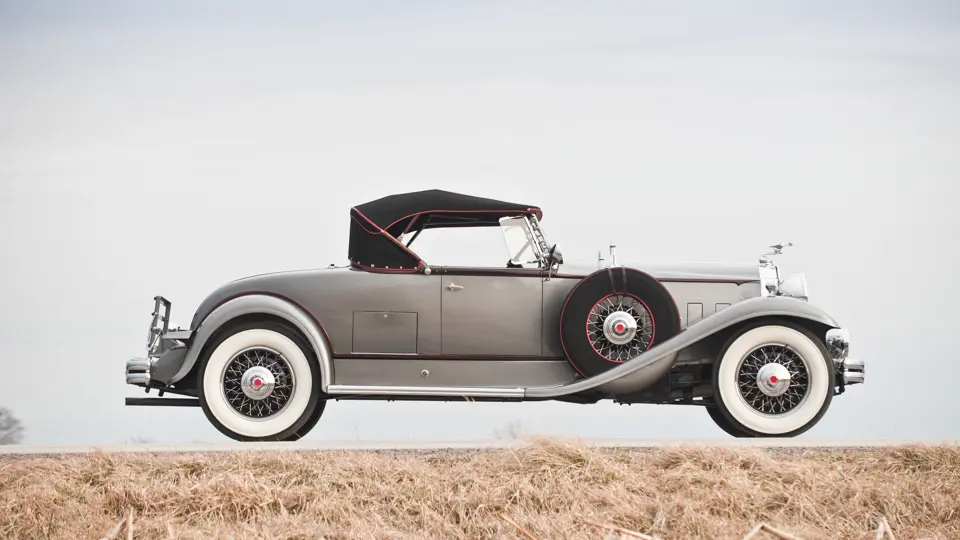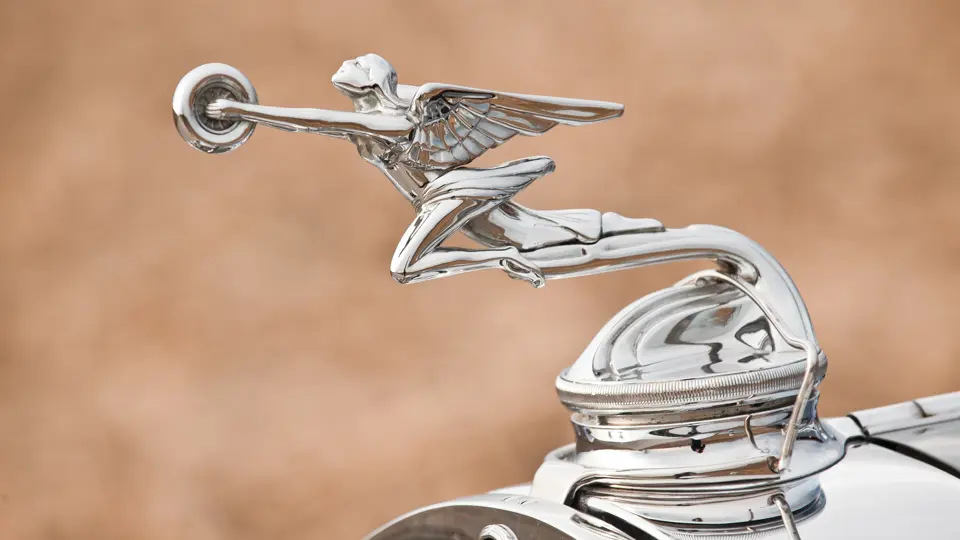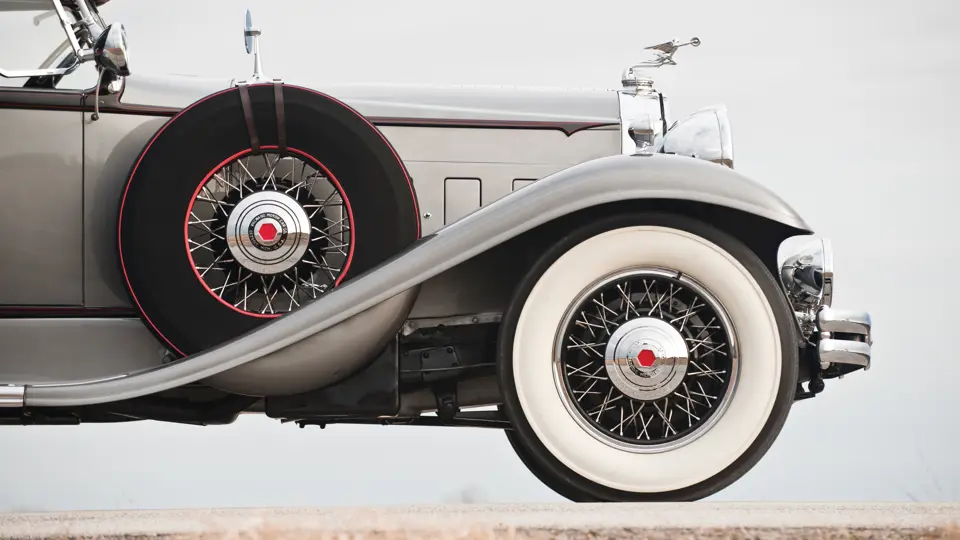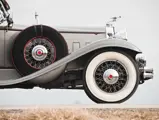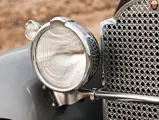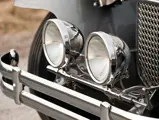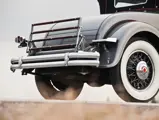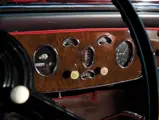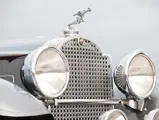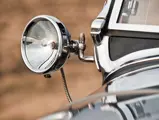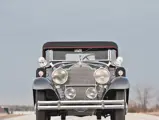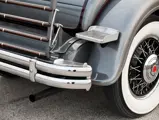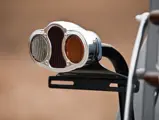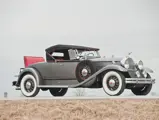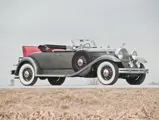120 hp, 384 cu. in. side-valve straight-eight engine, single two-barrel Stromberg carburetor, four-speed manual transmission, semi-elliptic front springs with solid axle, rear suspension with solid axle and semi-elliptic leaf springs, four-wheel mechanical drum brakes. Wheelbase: 140.5"
• Handsome, well-restored example of DeLuxe rumble seat roadster
• One of only 626 Model 840 Packards built in 1931
• Well equipped with twin side-mount spares, Pilot Ray spotlights
Packard introduced the Eighth Series cars on August 14, 1930 as the Depression took hold. The new models were designated 826, 833, 840 and 845, with large hubcaps, three-spoke steering wheels and deeper sweeping fenders with plain bumper clamps.
The Speedster legacy lived on from the 1929 and 1930 muscle cars, with manifolds and valves adopted across the board and a resulting increase in horsepower. The smaller 319-cubic inch eight produced 100 horsepower, while the 384-cubic inch DeLuxe eight generated 320 horsepower. The Model 840 rumble seat roadster would take on the mantle of the Speedster, with handsome body style number 472. It would be the last true Packard roadster, as later models would have roll-up windows.
But business was challenging, and Packard sales would drop from 28,386 in 1930 to 12,922 in 1931, sliding as far as 6,265 in 1934 before the lower price Model 120 would take the market by storm in 1935. For 1931, however, Packard responded by introducing the Ninth Series cars early on June 17. The net result was that the company had to slash the prices of leftover Eighth series cars, which was good news for those people who still had any money left. As an example, the Standard Eight roadster was cut from an introductory price of $2,425 in September 1930 to as little as $1,985 a year later, and salesmen would throw in wire wheels and other options to close the deal. Packard even provided updating kits to make the Eighth series look like the Ninth, with V-radiator, outside horns, grille and headlight bar and twin taillights.
Mechanically the Eighth Series had quite a bit more performance than the preceding Seventh series, thanks to the larger intake and exhaust ports and the three-piece manifold, which featured a cylindrical heater chamber to preheat the mixture.
One thing that cannot be disputed in the midst of this financial crisis is that Packards of this period were universally excellent, quite the match of the best cars in Europe. The 840 DeLuxe rumble seat roadster on offer today is one of the most attractive examples.
The recipient of a thorough and extensive restoration, it is finished in silver with a black beltline and red pinstripe. The black soft top has red piping, and the interior is well-finished in red leather, with clear gauges and well-finished wood trim. Externally, the panel fit is excellent and the chrome plating of the same caliber.
This car has benefited from a number of handsome options, including twin side-mount spare wheels with covers and mirrors, wind wings and turning Pilot Ray driving lights on the front bumper and separate hand-held spotlights by the windshield. The car is fitted with a chrome grille guard, and the radiator is crowned with the Goddess of Speed.
The wire wheels have chrome spokes and painted rims, which is an attractive combination, and there is a rear-mounted luggage rack. The engine compartment appears clean and correct, and the exhaust manifold is still in excellent condition without any cracking of the porcelain. The undercarriage indicates that some miles have been put on this roadster since its restoration, and while it could certainly be freshened to show condition, an open rumble seat roadster such as this would prove to be a fantastic touring car as well.
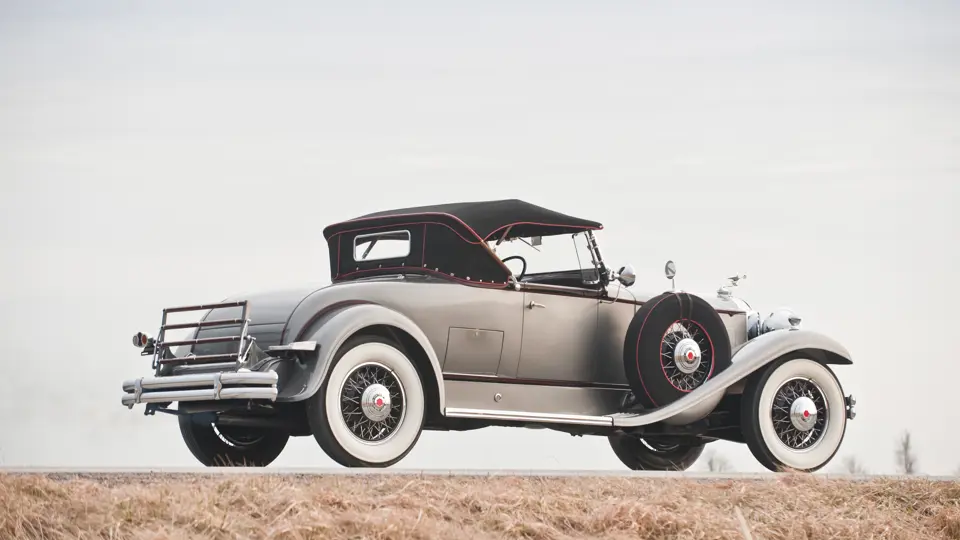




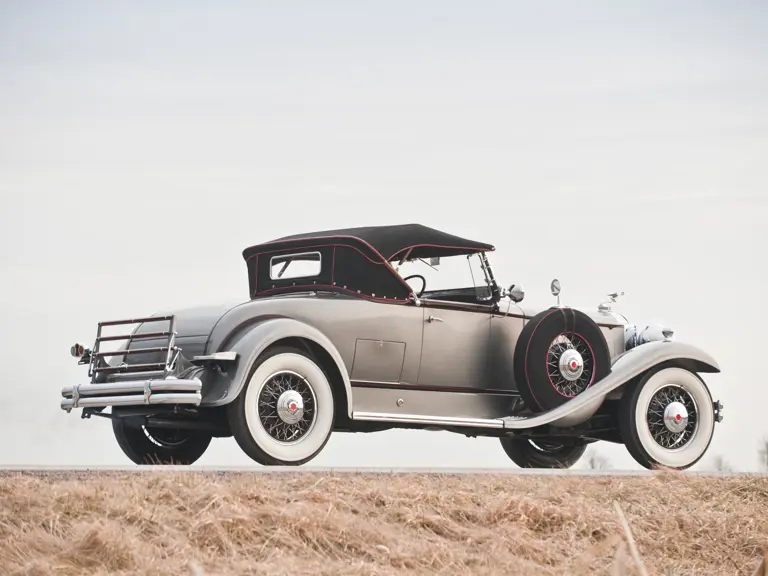
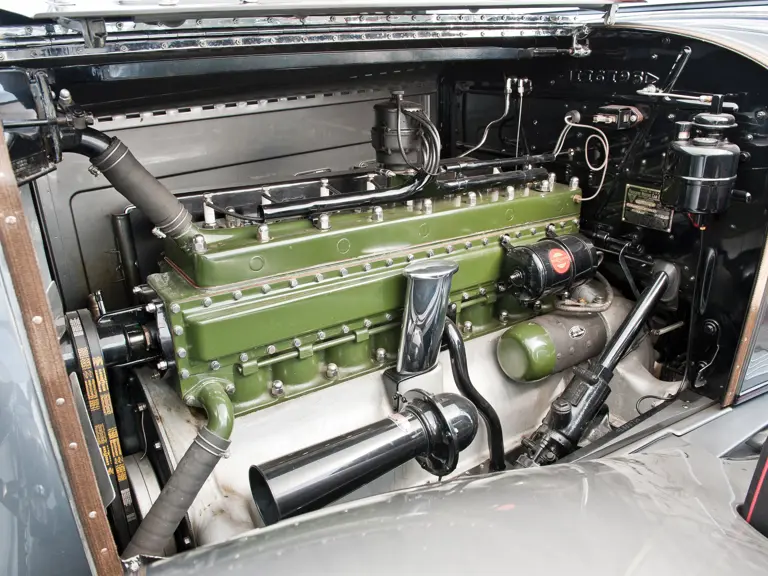
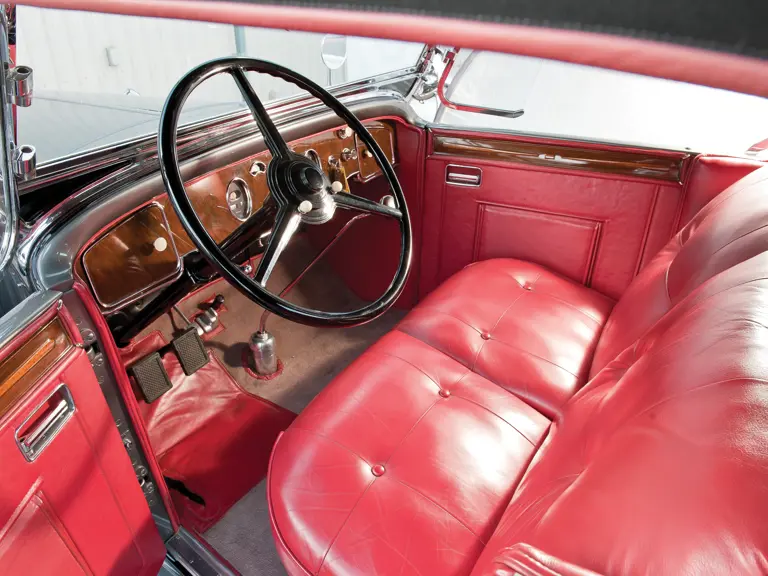
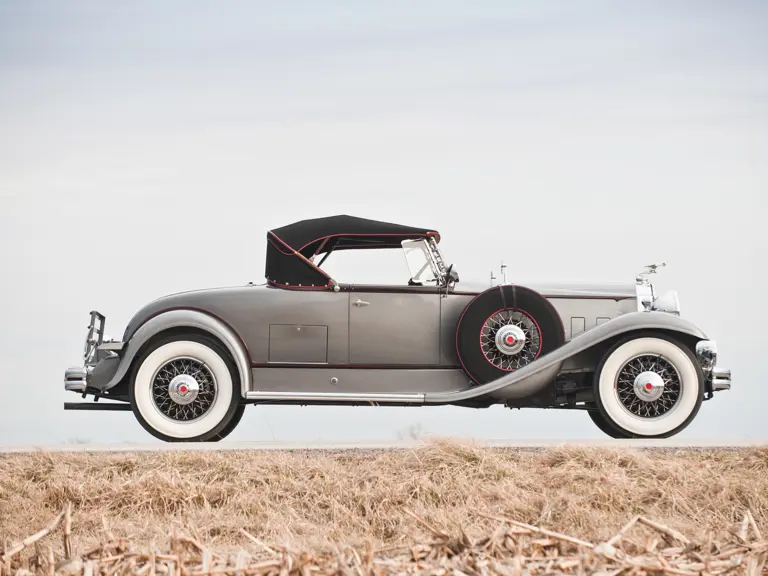
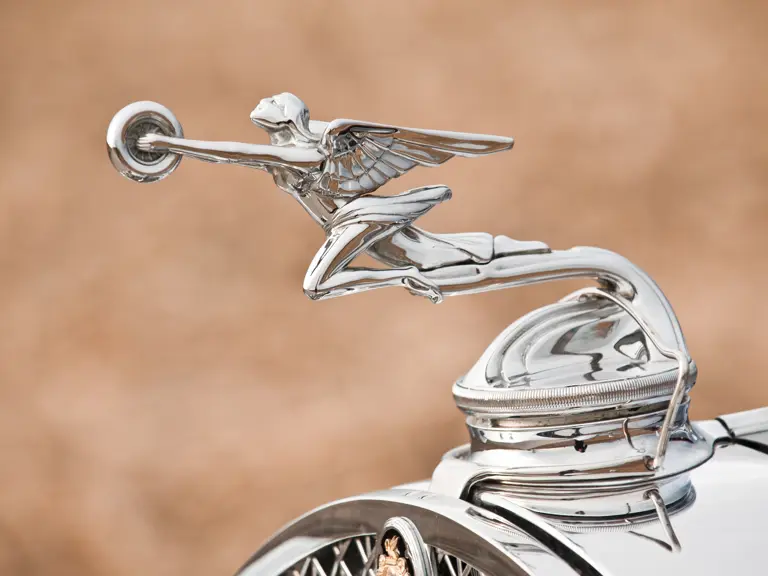
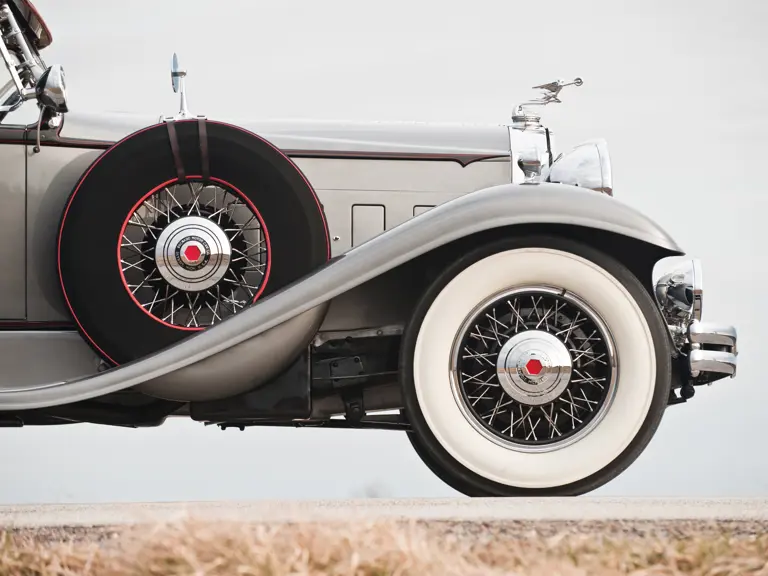
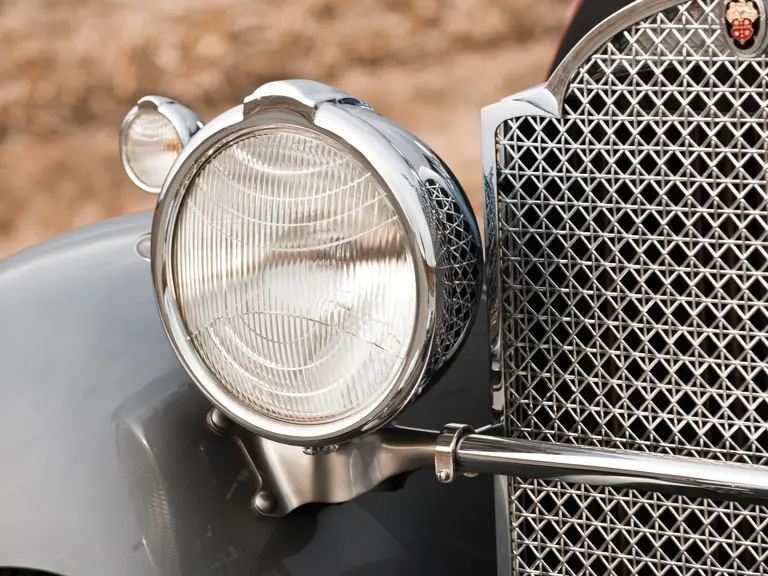
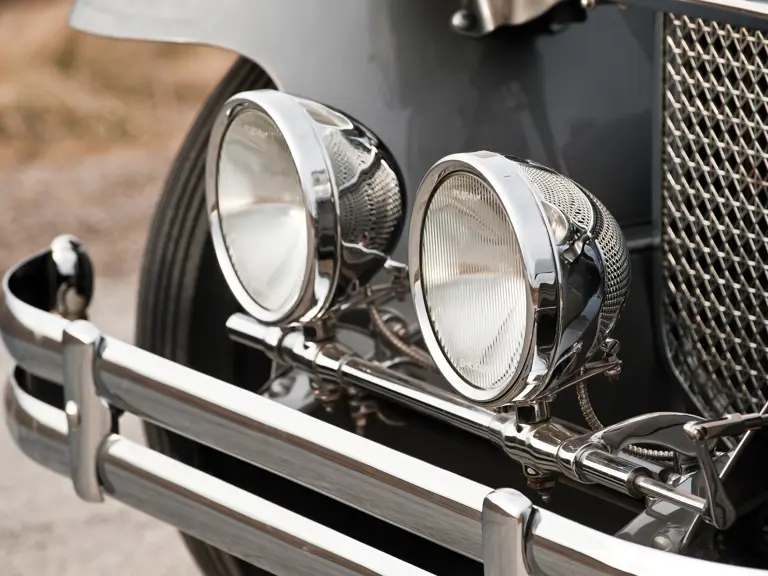


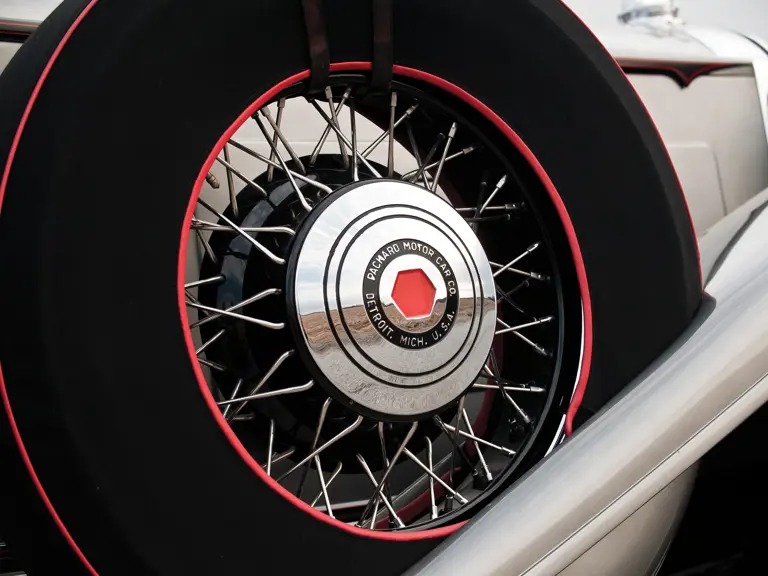
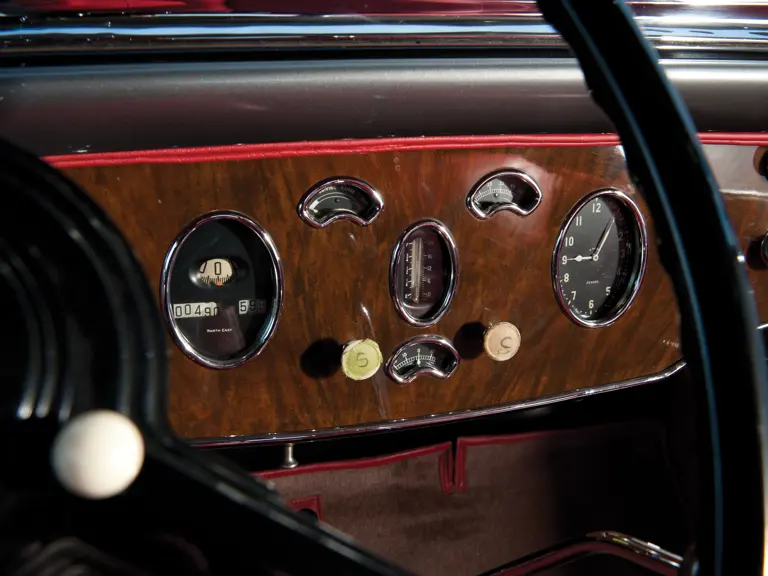
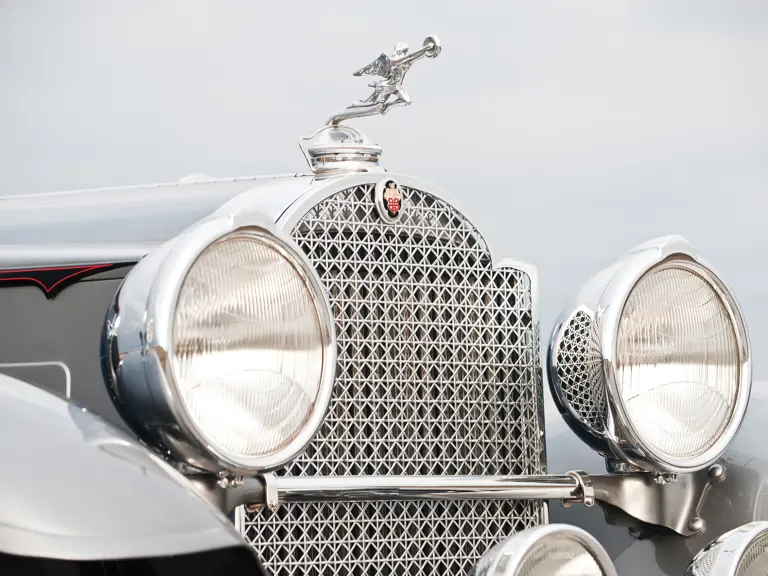
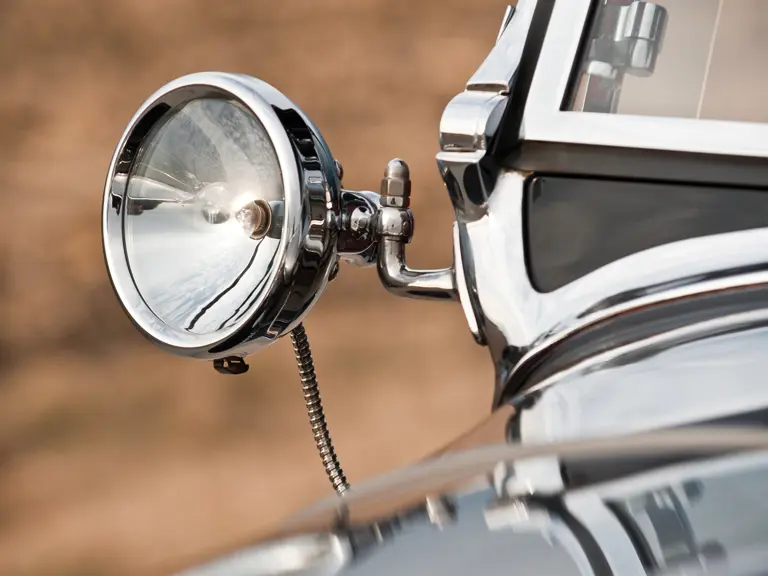
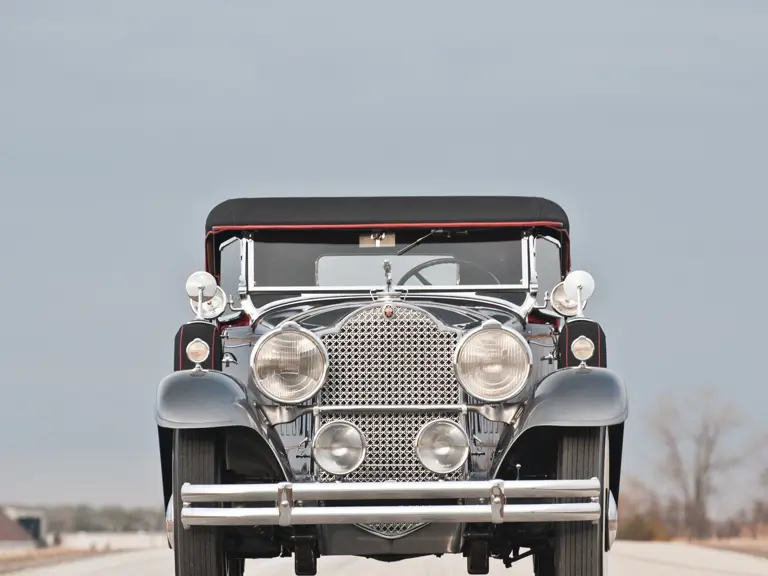
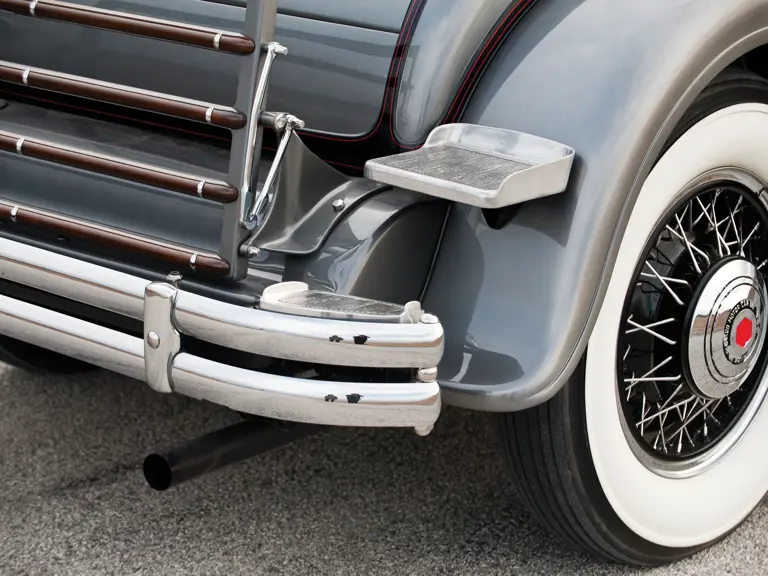
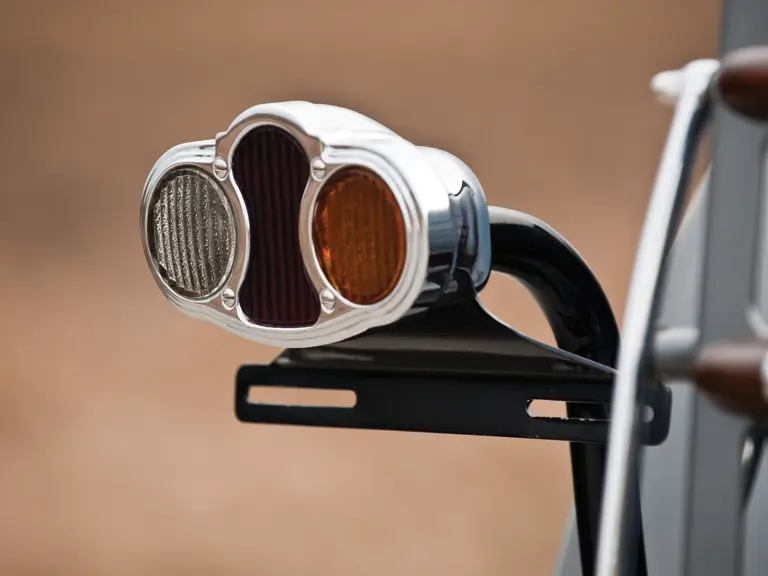

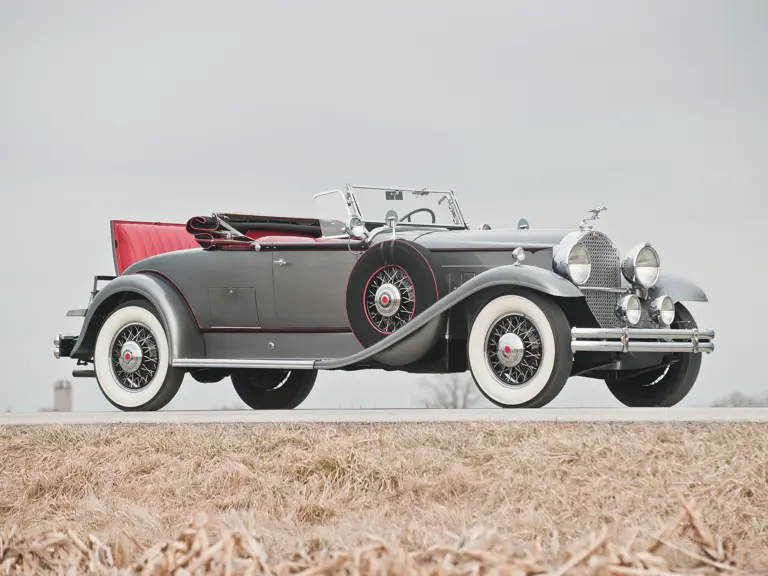

 | Amelia Island, Florida
| Amelia Island, Florida
